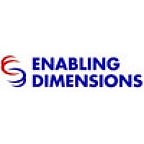Virtual Training/ E-Learning: The answer to questions surrounding the use of AI
In the tri part series A.I, we have explored some developments in artificial intelligence that are changing the way healthcare is provided. While touching the tip of the ice berg we tried to go beyond the basics, touching the depth of issues from diagnosis, prognosis, telemedicine to personalised health services.
But, are we equipped and able to adapt at a pace as rapid as the developments in A.I. Do we as humans responsible for other humans know how to best make use of the technology at hand?
We know now that artificial intelligence can enable doctors to treat patients better over time. Working together with machines can help healthcare professionals improve clinical decision making and patient health outcomes.
And, this knowledge brings some urgent questions that need answered first:
· Are the users of A.I. in healthcare aware of its growing and critical role?
· Are they familiar with its workings before they apply it to their process of caring for their patients?
· Is there enough stress on the feasibility of adopting these technologies and tools for better health outcomes?
If the answer to all of the above is yes, then the next question is how is the A.I. made available and how are the users trained for its uptake across the barriers of geography, society, education and language, to name a few.
Virtual Training or eLearning has proved itself to be a great interactive tool to help spread and equalise the message of:
1. Importance and role of A.I.
2. Using AI.
3. Benefits of using A.I
Virtual Training has seen some amazing success, using visuals, allowing flexible schedules for learning in a way that traditional training methods cannot. However, concerns over their effective incorporation into the medical ecosystem are ongoing with resistance to change and preference to hanging on to traditional methods of learning. This leads to a large gap experienced, between understanding in theory how an AI tool works as opposed to seamlessly making it a part of healthcare practices across communities.
In the last two articles we spoke about the importance of training medical personnel for the uptake of modern technologies that can assist with existing practices.
Public Health as a critical space is growing at a rapid rate with the COVID 19 accelerating progress. Today, detection and diagnosis to treatment and monitoring, reliance on technology is no longer an alternative to traditional practices but an integration. Institutions and workers have to keep up with the latest developments and technologies that are being introduced around the world at all times in order to ensure that patients and the general public can be given the best healthcare services possible in both preventive and treatment arenas. From detection and diagnosis to treatment and monitoring, reliance on technology is juxtaposed to traditional practices and no longer an alternative. There is a growing urgency to educate healthcare workers to developments in their field.
Time is of essence in healthcare.
In view of the above, how can we overcome the challenge that the world of A.I. is still new to many and that there remains a large gap between understanding in theory how an AI tool works as opposed to seamlessly making it a part of healthcare practices across communities.
Our experience verifies that larger organizations and those with growth mindsets understand the extended need to educate healthcare workers to developments in their field. Understanding that time is paramount when it comes to health and human physiology, virtual training/ e Learning as a method of imparting knowledge is being incorporated as a more efficient training method. For many International organisations it has been recognised as a boon for it works across borders, time zones and biases of human interaction, with built in assessment systems.
The charm of virtual training/ e-learning and its flexibility of uptake, developed by Enabling Dimensions, for some Public Health organisations has allowed healthcare workers to carry out their daily responsibilities while simultaneously learning new methods, tools and their significance enabling them to be better in providing services. This ease of accessibility has helped grassroot healthcare providers in remote areas also to keep up with the emerging trends of their urban contemporaries. With the COVID pandemic, shifting to online modes of learning has become common and critical as part of CME across all sectors, benefitting both private and public medical institutions. Thanks to the great number of webinars and online training courses, medical education has continued with participation from the community in the last 2 years, greatly benefiting the findings and learnings advancing understanding of the human physiology.
Various governments and organizations have relied on online modes of training to respond quickly to the COVID pandemic since 2020.
In our own country, we take the example of Karnataka (India), the state government launched online training for doctors, paramedical staff, and support medical staff at the district level to teach them how to use a ventilator and how to treat patients who are on a ventilator. Using experts and specialists, this training was catered towards both public and private healthcare workers. The initiative serves as a great example of how e-learning has been used to uniformly distribute knowledge across industry with support from organizations or governments.
For any questions on how virtual Training/ eLearning can get you on the trajectory of growth and knowledge please DM us.
Stay tuned for our next series where we look at the role of state and non-state institutions in furthering these online initiatives to bring artificial intelligence to the mainstream in the medical infrastructures of different societies and communities.
